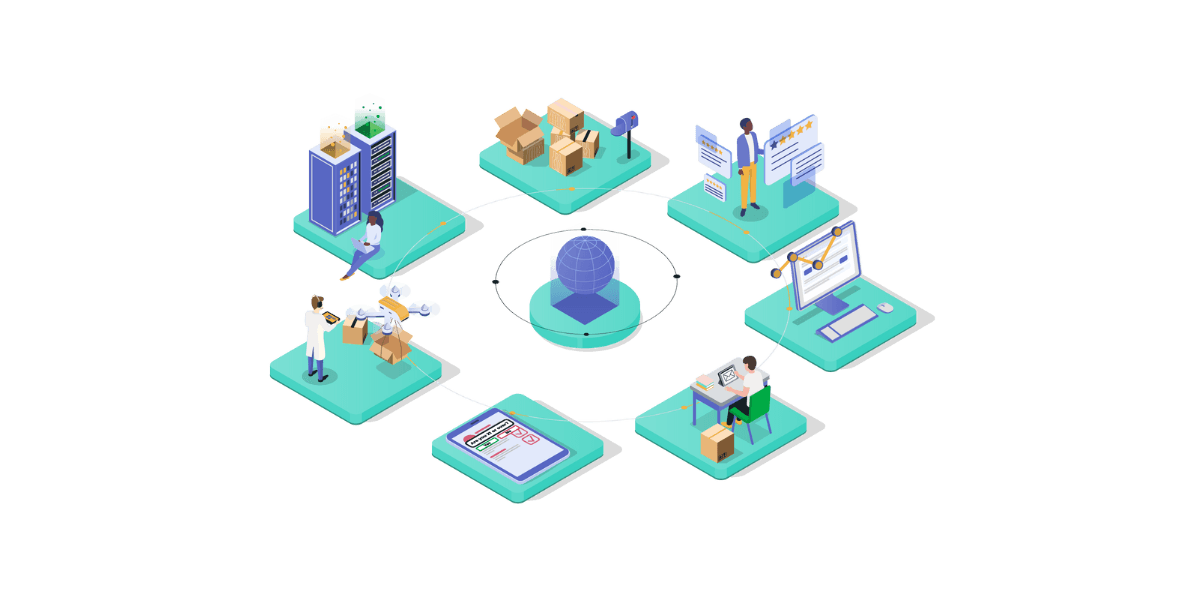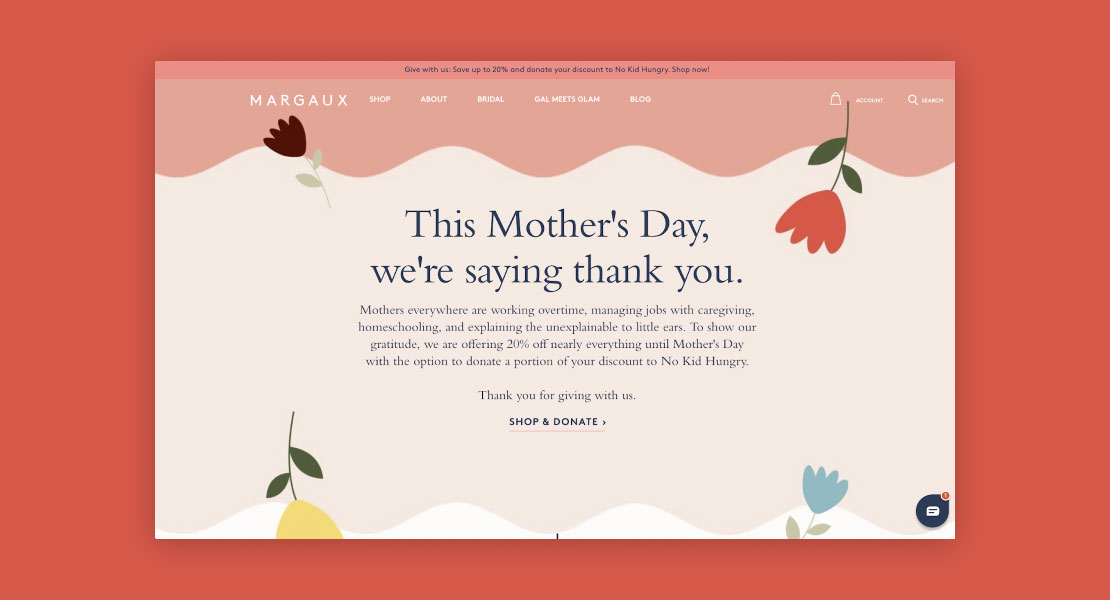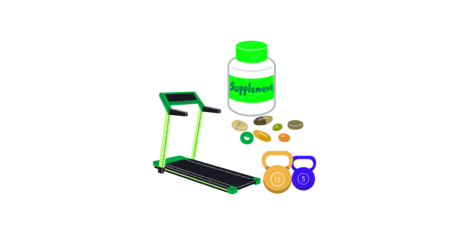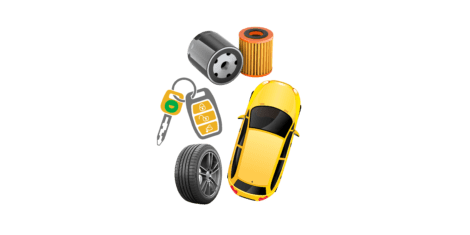Inventory management requires constant attention and is incredibly important to your business’s success. Yet, even the most successful eCommerce stores still run into problems every year getting lower-demand products off of their shelves.
Slow-moving inventory refers to stocked products (including raw materials and finished goods) that have little to no customer demand. This type of inventory can be problematic since it takes up physical space and uses up resources, which can negatively affect your company’s cash flow. This problem can be brought on by a number of things, including inaccurate sales projections, a slowing market, aggressive competitor promotions, etc. Whatever the reason, reducing slow-moving inventory results in greater ROI and a positive cash flow.
Following this simple guide, you will be armed with the tools you need to sell excess inventory during those slower months and boost website conversions.
Analyze Your Inventory
Downtime for sales often occurs in the early months of the year, as well as at the end of seasons when new products come into demand. Rather than clinging onto these items in the hope that someone will suddenly purchase them, it’s best to find ways to clear your stock as quickly as possible.
Here are a few things to keep in mind when it comes to slow-moving and excess inventory:
- Cash flow is the lifeblood of your business. Selling an item at a very low-profit margin or even at a loss is better than it taking up shelf space.
- Inventory should usually be sold within 90-120 days. If items haven’t moved in this amount of time, it’s time to get rid of them.
- Holding on to old and excess inventory is costing you. Whether it’s the opportunity cost of not being able to bring in fresh inventory or the cost to rent shelf or warehouse space, you’re paying for that dust-collecting inventory. This applies to drop shipping eCommerce businesses as well.
- The problem of slow-moving and excess inventory happens to every retailer. Even if you heavily research your market and accurately forecast sales, nothing ever goes exactly as planned. So don’t stress.
The first step towards clearing your excess stock is to identify slow-moving items. Here are five ways you can accomplish this:
Calculating Inventory Turnover
Inventory turnover rate is calculated with the following formula:
COGS / (Beginning Inventory + Ending Inventory)/2 = Inventory Turnover Ratio
A high inventory turnover rate indicates that your company is selling goods as rapidly as they are received, whereas a low inventory turnover rate indicates that goods are moving off the shelves more slowly. If your turnover rate is poor, you might be ordering too much of a certain item, which would cause slow-moving inventory and operational inefficiencies.
Forecasting Moving Products
Rely on your POS system to find out which inventory items are selling and which aren’t. This should enable you to forecast future client demand and, as a result, identify slow-selling products.
You can find trends in your inventory by analyzing both recent and historical data over long and small periods of time. In the long run, even small adjustments that seem insignificant at the time may require management attention. Sometimes, you’ll need to have more inventory on hand simply because you’re gearing up for your busy season (hint: that’s not always going to be Q4 for everyone)–and that’s okay. You’ll simply need to plan ahead for this expense on your balance sheet and make sure you’ve properly budgeted ahead of time.
Average Days To Sell Inventory
Average days to sell inventory is a blended financial metric that estimates the typical number of days needed to generate sales equivalent to the value of the inventory. However, it’s possible that certain products sell out and require repeated reorders while others don’t even reach the point of being sold out.
The typical days to sell your inventory will differ from industry to industry and product to product. An item is often regarded as slow-moving if there has been a demand for less than six months in a 12-month period.
What Are Holding Costs?
Holding costs are defined as the price a company pays to store and manage its inventory. The price of storage, depreciation, labor, upkeep, insurance, security, and more can all be included in your inventory holding costs. Holding costs can vary wildly but can be up to 20-30% of the total cost of inventory. Some examples of expenses that would be included in your e-commerce business’ holding costs would be:
- Warehousing Costs: These are expenses related to renting or owning warehouse space to store inventory. They may include rent, utilities, insurance, security, maintenance, etc.
- Inventory Management Costs: These cover management costs of your inventory, like tracking stock levels, regular audits, inventory control/management software, etc.
- Inventory Financing Costs: If your e-commerce business relies on financing to purchase inventory, there may be costs associated with interest payments, loan fees, or other financial charges.
- Shrinkage Costs: Shrinkage refers to losses in inventory because of theft, damage, or errors. For an e-commerce business, this might include the cost of replenishing lost inventory during shipping, investigating customer claims, and security measures.
- Fulfillment Costs: These are the costs related to preparing orders for shipment, such as packaging, materials, labor, order processing software, etc.
These are just a few examples of the various expenses that are encompassed by the term holding costs. It’s clear that the more inventory you have on hand, the more those expenses will increase.
Inventory that turns slowly leads to expensive operating efficiencies as quickly as it reduces your revenue.
What Is Gross Profit?
Gross profit is the profit your business makes after deducting the costs associated with making and selling products or the costs associated with providing your services. Gross profit will appear on the company’s income statement and can be calculated by subtracting the cost of goods sold (COGS) from revenue (sales).
Tracking gross profit over time is one way to keep track of unfavorable events that harm your business. Slow-moving inventory won’t necessarily be indicated by a decline in weekly gross profit on its own, but when combined with other data, it can help determine whether the issue has gotten out of hand.
Photo by Adrian Sulyok on Unsplash
14 Strategies for Converting Slow-Moving And Excess Inventory Into Cash
Once you have identified your slow-moving inventory items, you can start working on a plan to sell them. Here are 14 ways to turn slow-moving and excess inventory into cash.
Sales Strategies For Quick Results
The most obvious way to clear out inventory is to discount old and excess stock. In order to create demand for these products, you’ll need to discount your items heavily. Consider offering discounts between 35-70%. Yes, this seems like a lot, and you may end up selling it at a lower cost (or even a loss), but these products need to go! That way, you can look forward to future months and leave old and excess stock in the past. Effectively notify your shoppers of your sales with eCommerce promotions and pop-ups.
While sales are a great way to drive shoppers to purchase, it’s important to keep the frequency of sales in mind. If you have too many sales throughout the year, they may lose their appeal and effectiveness. So make sure to balance these discounting strategies with other non-discount campaigns throughout the year!
Below are a few examples of the types of sales to focus on when trying to clear out inventory:
1. Clearance Sale
This is an opportunity to flush out any stock that hasn’t sold in the past 3-6 months. Reach out to your shoppers via email and social. If you have data on a shopper’s sizes or product preferences, this could be the perfect time to hit them with personalized emails. If you can send me an email featuring size 10.5 sandals that are currently on sale, I’m going to be much more inclined to make a purchase.
Another thing to consider is to have a clearance section accessible to shoppers at all times. This way, bargain hunters can check up on deals, and you can post old inventory whenever you feel it’s time to clear the shelf space.
2. Flash Sale
Urgency and FOMO (the fear of missing out) have a serious psychological effect on consumers, which makes flash sales a slam-dunk way to convert some sales. Be sure to notify your shoppers of a limited-time sale. It’s important to build anticipation, so send out emails a few days before, along with reminders. Notify shoppers via social media and set up an on-site promotion to create urgency on your site. Here’s everything you need to know about running a successful flash sale!
3. Specific Item Sale
Sometimes, a lack of focus on sales can be its very downfall. If you find that your sales aren’t yielding the results you’ve anticipated, try narrowing the focus. Run a sale that is aimed at a particular type of shopper, product, or need. This will help you with a more dialed-in campaign for personalized and relevant messaging that’s more likely to convert certain audience segments.
4. Seasonal Sales
A change in the season may mean that your product line is changing as well. This is a great time to market to bargain hunters who are actively looking for deals and to make room for seasonal stock on your site. But you shouldn’t forget about seasonal holidays as well, such as Valentine’s Day coming up in February or Mother’s Day in May. They are perfect gift-giving opportunities, so make sure to plan and start your marketing campaigns early for some recurring wins throughout the year.
Our 2024 marketing calendar has all the major sales and promotional dates so you can stay ahead of the competition.
Remarket & Reposition Products For Fresh Impressions
Products may not be selling because of how they have been marketed. Sometimes you just need to freshen up the product marketing to get these items to sell. Take a look at some quick changes you can make.
5. Take New Product Photos
Product photography is incredibly important and can also be quite difficult to get right every time. Give your products a fresh look with newer, more attractive photos. Make sure the images are high quality, show the item from multiple angles, and maybe throw in a lifestyle shot to play on emotion.
Don’t have time to master photography? Check out Pixc, a simple solution for product photography!
Even better? Use UGC from your customer reviews to show different angles and a more “natural” vibe to your product photos. Depending on what you sell, this can help shoppers understand how the item might fit them, how it looks in person, what the texture is like, etc.

6. Place Items In New Places On-Site
Ever consider that products aren’t selling because of the category or location on your site? This could be the case. Visibility and accessibility improvements could help you move stale inventory. Whether this is creating a new landing page or moving items to different categories/sections of your site, a change of scenery could help these items sell. Make your site as navigatable as possible so shoppers are more inclined to explore.
You can also do this by placing navigation prompts into exit offers to keep existing traffic on your website longer and driving them toward certain products or resources.

7. Use New Keywords In The Product Title & Description
Writing product descriptions that not only evoke a need to purchase but are also sound for SEO is a tough task to manage. If a product isn’t selling very well after a couple of months, it’s time to give copywriting another go. Shopify provides some excellent tips for crafting excellent product copy that will drive sales.
Product Bundles: Move More Inventory & Increase AOV Simultaneously
Next to discounting, bundling is the most popular pricing method used by retailers. Bundling is when you take a group of products and sell them together as a bundle for a slightly lower price than if they were sold separately. While you are discounting inventory, this allows you to protect your margins and profit on a sale.
8. Bundle Fast-Moving Products With Slow-Moving products
A common tactic for making slow-moving inventory look more attractive is by bundling it with items in high demand. Shoppers who are interested in purchasing a top-selling item will view a bundle as a bargain and are more inclined to go for the deal. Also, consider pairing high-margin items with low-margin items so you can attach a more enticing price to the bundle.
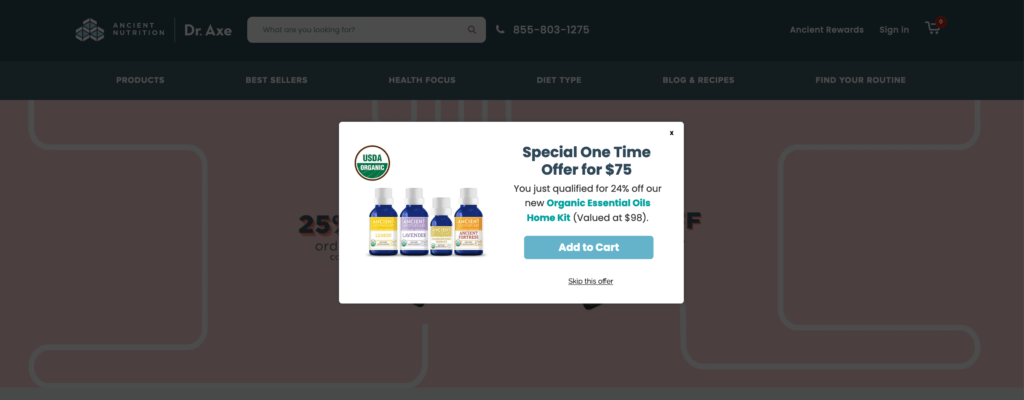
9. Bundle Multiple Units Of The Same Product
If you’re sitting on a bunch of excess stock, make those particular items more attractive by offering a bundle of multiple units at a discounted price, aka a volume discount. This way, every sale will be of a higher dollar amount and flush more units of stale inventory.
10. Bundle Complementary Products
If your slow-moving stock could act as a complement to another product, consider bundling those two items together.
For example, you are selling a French press that is selling very well and a coffee blend that isn’t selling well. Bundle these two products together for an attractive package deal! Depending on the two items’ profit margins—you could even throw the slow-moving item in for free as a gift with purchase (more on that below)!
Use Low-Cost Items As Incentives
If you find that an item is very difficult to sell, then try using it as an incentive for your shoppers to take action. Small incentives can be very powerful when it comes to driving the desired results.
11. Drive Email Capture With Products
One of your major goals in converting traffic should be collecting an email address. Email converts at a 4X higher rate than other traffic sources, making it the most effective for driving sales.
Present an offer for a gift with purchase to shoppers on your site. “Subscribe to our newsletter and receive a free pair of socks with your purchase!” This is not only an incentive to subscribe to emails but also an incentive to purchase. Build your email list and flush your excess inventory with this simple strategy.
Need an email capture solution? Start building your list with Justuno today with industry-leading email pop-ups, exit offer pop-ups, and banners.
12. Use Products As An Incentive To Increase Order Size
Another option is to incentivize shoppers to increase their order size. Threshold offers like “Spend $75 or more and receive a free water bottle!” can help you get more out of each sale while also getting rid of those old water bottles that are sitting there collecting dust.

If All Else Fails…
Here are a few options for when you’ve tried everything else.
13. Donate To Receive Tax Deductions
Let’s face it, if you can’t find a way to sell old inventory, then donating it may be your best option. There are plenty of organizations that are willing to accept donations, and your business can benefit from helping others. Here’s a great post on how to cut your taxes with excess inventory.
14. Contact Suppliers To See If Returns Or Exchanges Are Possible
While this is a shot in the dark, asking suppliers if returns or exchanges are possible never hurts. There are a few points of leverage that may make your case for a return more plausible.
- The product is wrong for your market
- The inventory is packaged and undamaged
- The supplier wants to keep you as a customer
Managing Inventory
In addition to the above-listed strategies to move inventory off your books, there are also certain inventory management techniques you can apply in order to optimize your stock levels.
Implementing An Inventory Management System
An inventory management system is a piece of software or a collection of procedures that aid businesses in keeping track of their orders, inventory levels, and product data. The system offers companies the ability to optimize inventory levels in order to lower costs, avoid inventory issues like overstock and stockouts, improve cash flow, and boost customer satisfaction.
It also helps automate inventory control procedures. Typical features of an inventory management system include inventory tracking, order management, forecasting, and reporting capabilities.
Setting Inventory Thresholds
Threshold inventory quantity is a term that refers to the minimum amount of inventory an organization wants to keep on hand. In order to determine a reasonable inventory threshold, you’ll need to take into consideration the historical sales data for every item in your warehouse as well as supplier pricing factors. The carrying costs, the time it takes for you to make the purchase, for the seller to fill it, and for the things to arrive are additional factors that go into figuring out what quantity is reasonable.
Thanks to technological advancements, most businesses now check inventory levels using software applications and scanner devices. When inventory counts hit certain threshold levels, the inventory replenishment process is started.
Regularly Monitoring Inventory Levels
If you aren’t keeping track of inventory counts, you run the risk of having too much inventory and unnecessary spending that could hurt your bottom line.
Regularly monitoring your inventory levels will help lower your expenses by providing a thorough analysis of your stock levels. Companies can keep an eye on potential overstock situations by monitoring how long certain items have been on hand. If the company has a contract that requires it to purchase a certain quantity of goods on a regular basis, and its inventory gradually starts to increase over time, that may indicate that sales have slowed.
Regularly monitoring inventory levels will also help you maintain the right amount of goods and avoid shipping mistakes like mispicks that can be expensive and time-consuming to fix.
The Bottom Line
Excess and old inventory are inevitable. Although having a down month may seem like the end of the world, you’re a savvy retailer who will find ways to turn your inventory into cash. The various tactics listed above should provide you with some creative ways to clear your shelf space and pile up some revenue in the process. So go get started and convert your slow-moving and excess inventory into cash!
Interested in seeing how Justuno can help you turn slow-moving inventory into sales?
Get started for free with a 14-day trial, or get a personalized 1:1 website audit to see what hidden opportunities your store might have.
